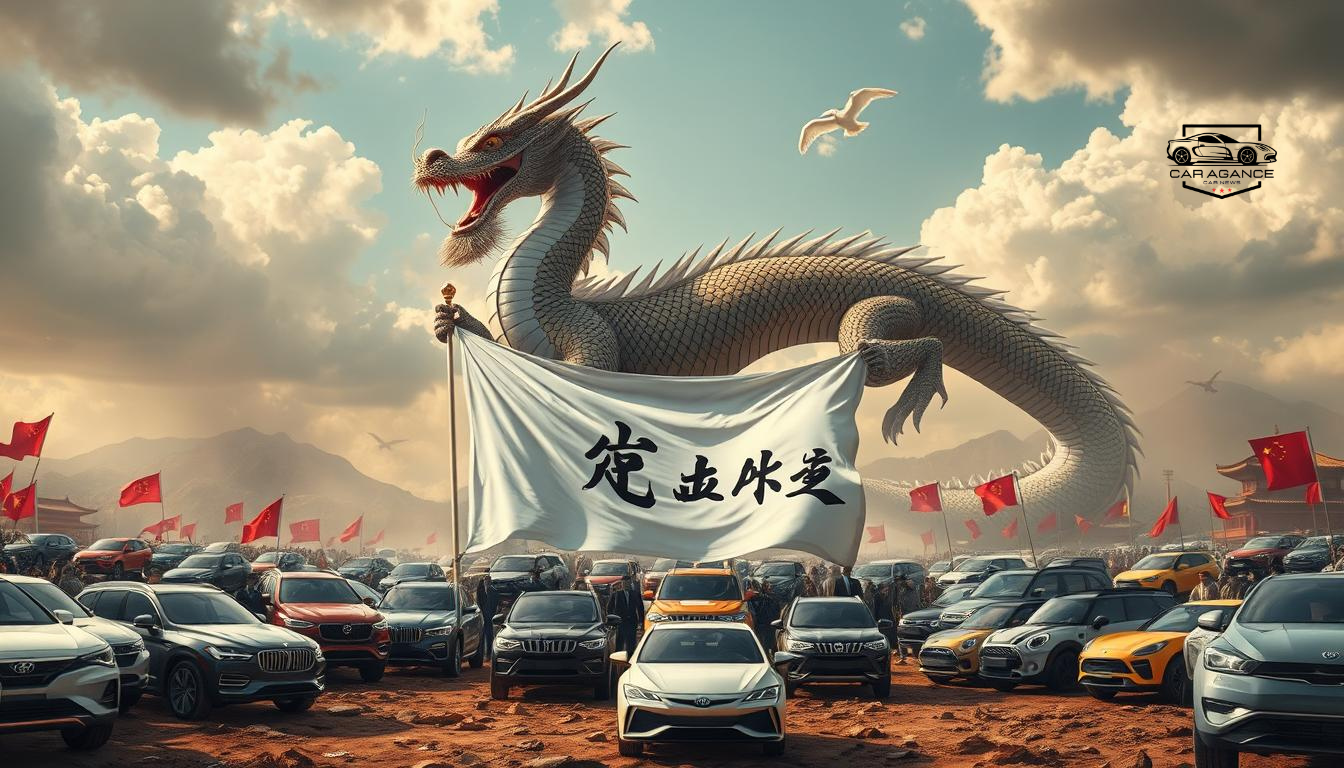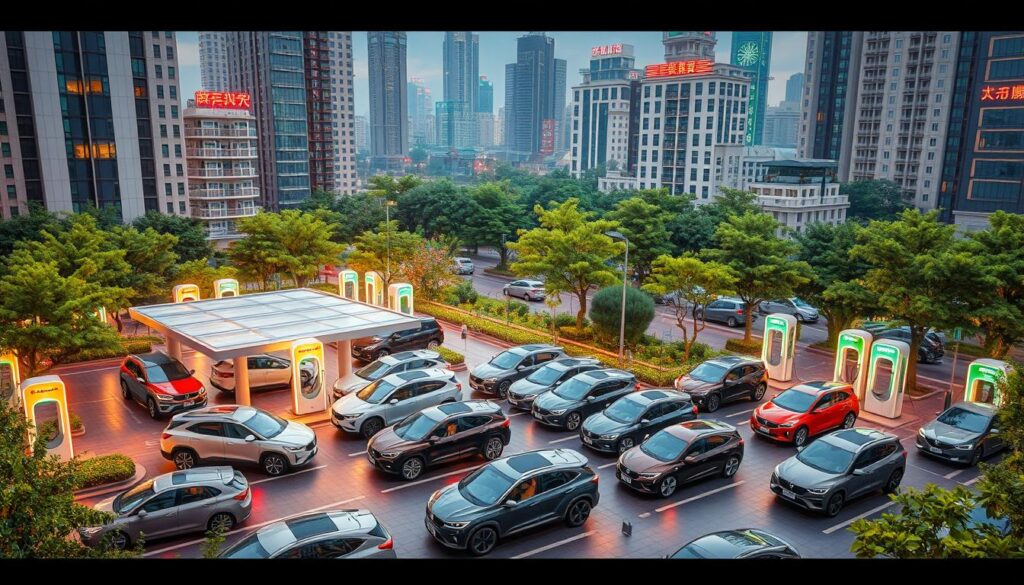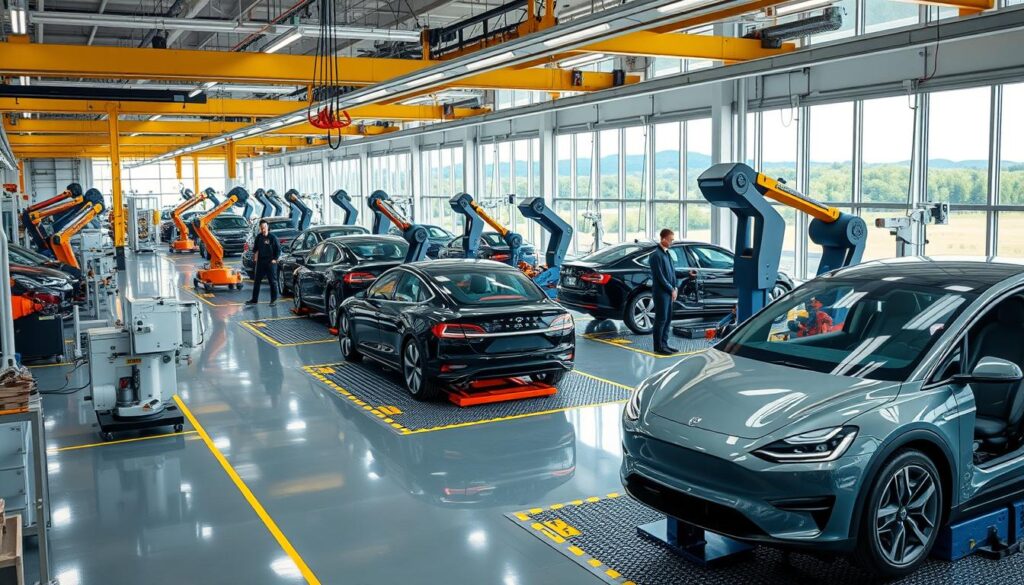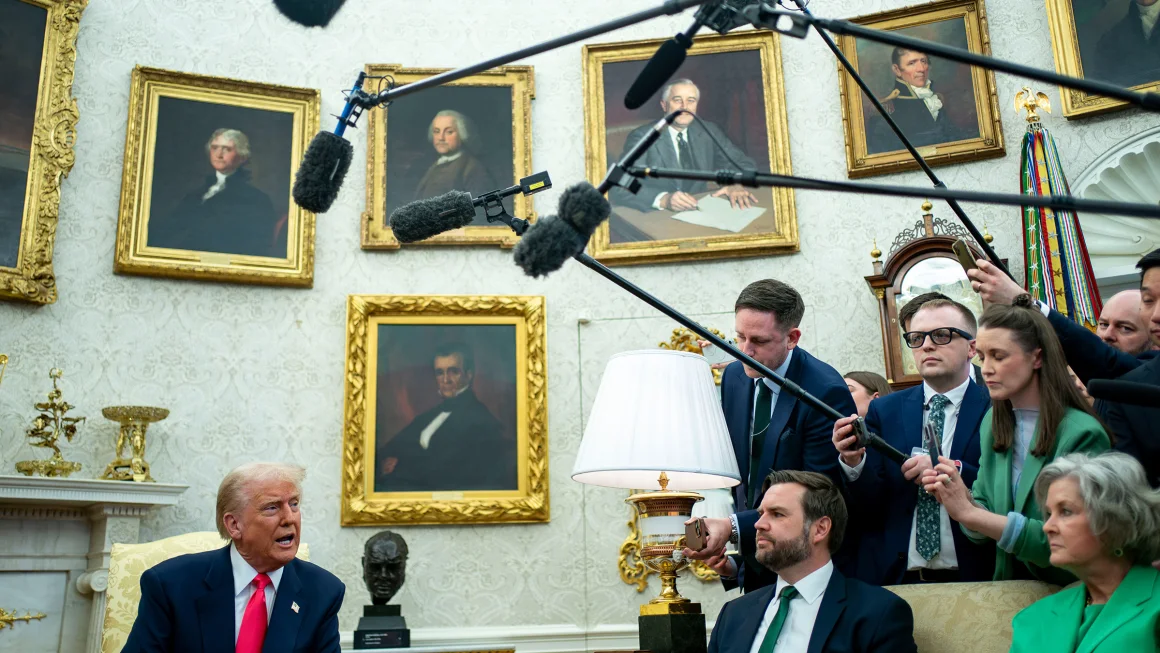
The car industry is changing fast, with China leading the way. Big names like BYD, Tesla, General Motors, and Volkswagen are losing ground to Chinese brands. By 2030, Chinese companies might own 33% of the global car market.
This shift is making global car companies give up. Tariffs and trade rules aren’t stopping China’s rise. Now, these companies are teaming up with Chinese firms, showing they’re retreating rather than fighting.
Key Takeaways
- China’s automotive sector significantly impacts global market dynamics.
- Major global brands are reassessing their strategies amidst Chinese market dominance.
- The projected growth of Chinese manufacturers poses a threat to established players.
- Strategic partnerships are emerging as a necessary response to competitive pressures.
- Tariffs and trade barriers are proving ineffective against China’s automotive expansion.
The Rise of the Chinese Automotive Industry
The china automotive industry has seen a huge change in the last few decades. It started with small production but now leads the world in making and selling cars. In 1953, FAW (First Automobile Works) was founded, starting China’s car-making journey.
In 2020, China became the top car producer globally. It made billions of car parts, meeting local needs and exporting to other countries. The Hongqi series, started in the late 1950s, showed China’s big dreams in car-making.
Government support has been key for the automotive sector. Over $230 billion in subsidies helped, especially for green energy. President Xi Jinping’s leadership aimed to make China a car giant. China is now a leader in electric vehicles.
Chinese car makers have grown fast, moving beyond making simple cars. Their quick progress in science and technology is promising. China’s innovations are now challenging traditional car markets.
In summary, China’s car industry growth is more than just making more cars. It’s a big change for the world’s car makers and economy. From making just 30 cars in 1958 to leading the world shows a big shift in the industry’s history.
Global Car Companies Raise the “White Flag” to the Chinese Dragon
The world of cars is changing fast. International car makers are teaming up with China’s growing electric vehicle market. Chinese help and rules have changed the competition in the auto industry. Now, global companies must adjust or risk losing out.
The Impact of Chinese Subsidies and Policies
China’s big push into electric cars has changed the game. From 2009 to 2023, over $230 billion went into supporting EVs. This has made Chinese companies lead in electric car sales, with more than half of the world’s EVs sold in 2023.
This government support has put pressure on foreign car makers. The EU and the U.S. are talking about tariffs on Chinese car imports.
Major Players and Competition in the Chinese Auto Market
Chinese car makers like BYD are setting new standards. In December 2023, 69 percent of all new EVs sold worldwide were from China. This shows China’s strong lead in electric cars.
By 2030, Chinese car makers could control up to 33 percent of the global car market. This growth shows a big surrender to Chinese influence in cars. Brands like Volkswagen and Stellantis are investing in Chinese companies to keep up.
This shift in power has made global companies rethink their strategies. It’s a big change in the car world.
| Year | Chinese EV Market Share | Global EV Sales | Supporting Subsidies (Billion USD) |
|---|---|---|---|
| 2023 | 50% | 10 million | $230 |
| Projected 2030 | 33% | 30 million | Ongoing |

Electric Vehicle (EV) Production and Global Market Trends
The electric vehicle segment is growing fast, especially in China. By 2024, China led the world with over 765,000 electric vehicles sold in January. This is more than the next 19 countries combined. This growth shows strong demand in China and its impact on global EV production.
Statistical Overview of Global EV Production
Recent data shows a big jump in electric vehicle production and battery capacity. China made up 57% of the global battery capacity added in January 2024. This is a big increase from the year before. The global battery capacity grew by 64%, thanks to Chinese makers. Here are some key stats on electric vehicle production and market growth:
| Indicator | January 2023 | January 2024 | Year-on-Year Change |
|---|---|---|---|
| Chinese EV Registrations (including hybrids) | N/A | Over 765,000 | N/A |
| Global Battery Capacity (GWh) | N/A | 64% increase | + |
| Percentage of Electrified Vehicles in China | N/A | 33% | N/A |
| China’s Share of Global Battery Capacity | N/A | 57% | N/A |
Shifts in Consumer Preferences Toward Chinese EVs
More people want Chinese electric vehicles. They like the low prices, new tech, and cool designs. BYD started a price war with its electric and hybrid cars. China also introduced 71 new models this year, making it a big player in the car market.
Last year, Chinese buyers bought nearly 6.6 million electric vehicles. This shows how China’s electric car sector is doing well. As the car market changes, Chinese makers are leading in quality and innovation. They are setting the standard for electric vehicles.

International Business Strategies and Partnerships
Chinese automotive companies are making a big impact worldwide. This has made international car brands rethink their strategies. They are now forming joint ventures to stay ahead.
These partnerships help global brands use local knowledge and infrastructure. They also help them deal with the challenges of the Chinese market. This way, they can reach China’s huge consumer base and use its advanced manufacturing.
The Role of Joint Ventures in the Chinese Car Market
Joint ventures are key for car brands wanting to enter the Chinese market. By working with local makers, they share risks and resources. This helps them meet local tastes and follow China’s rules.
These partnerships improve success rates in the market. They also lead to innovation through sharing knowledge.
How Global Brands Adapt to Chinese Demand
Meeting Chinese consumer needs is vital for global car brands. They must change their designs, marketing, and supply chains. This ensures they meet local tastes and expectations.
Companies like Mercedes-Benz and Volkswagen have already done this. They’ve invested in research for Chinese markets. By being flexible and focusing on the customer, global brands can succeed in this changing market.
FAQ
What is driving the growth of the Chinese automotive industry?
The Chinese automotive industry is booming thanks to government support and green energy focus. This has led to huge investments, over $230 billion in subsidies.
How are global car companies reacting to the rise of Chinese manufacturers?
Global car companies are changing their plans. They’re forming partnerships with Chinese firms to stay ahead. This shows a strategic move rather than direct competition.
What share of the global car market is predicted for Chinese companies by 2030?
Experts think Chinese companies could take about 33% of the global car market by 2030. This shows China’s big impact on the world car market.
How has the electric vehicle segment evolved within China’s automotive industry?
By 2023, over 50% of electric vehicles sold globally were made in China. This is thanks to strong demand at home and BYD’s global push.
What challenges do international automakers face in the Chinese market?
International automakers face tough rules and need to meet local tastes. They must share control to keep up in China’s fast-changing car market.
Why are global car manufacturers focusing on partnerships with Chinese firms?
Global car makers are teaming up with Chinese firms to tap into China’s huge market. They also want to use China’s advanced manufacturing skills to stay competitive.







